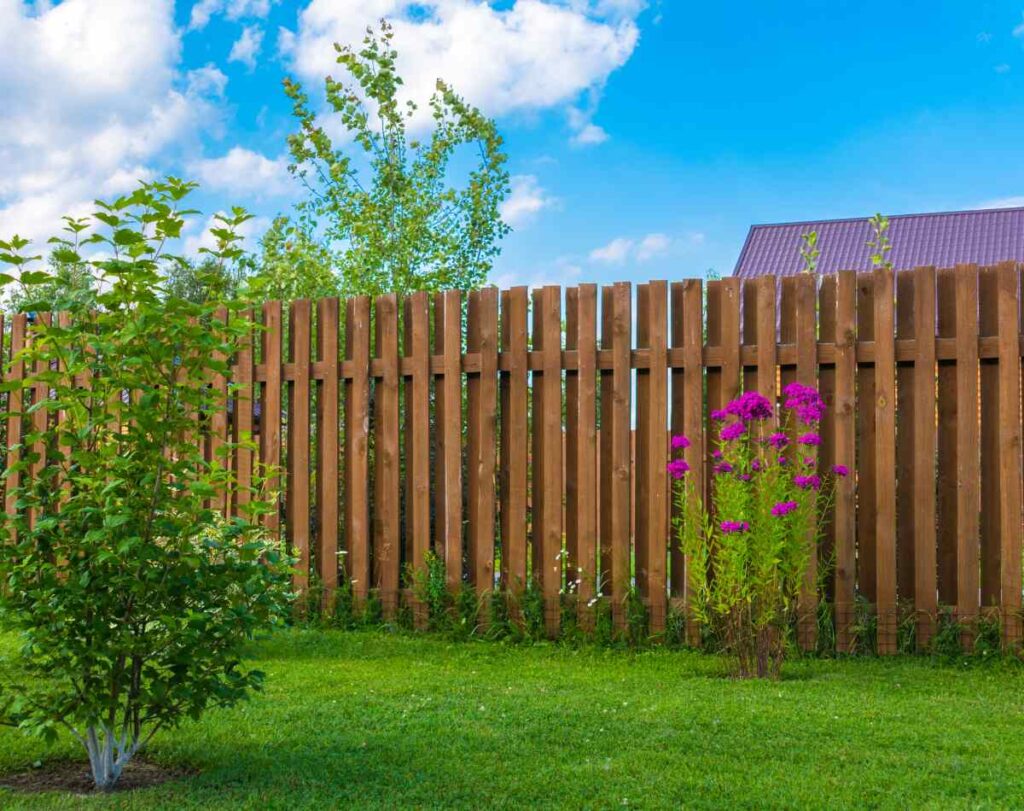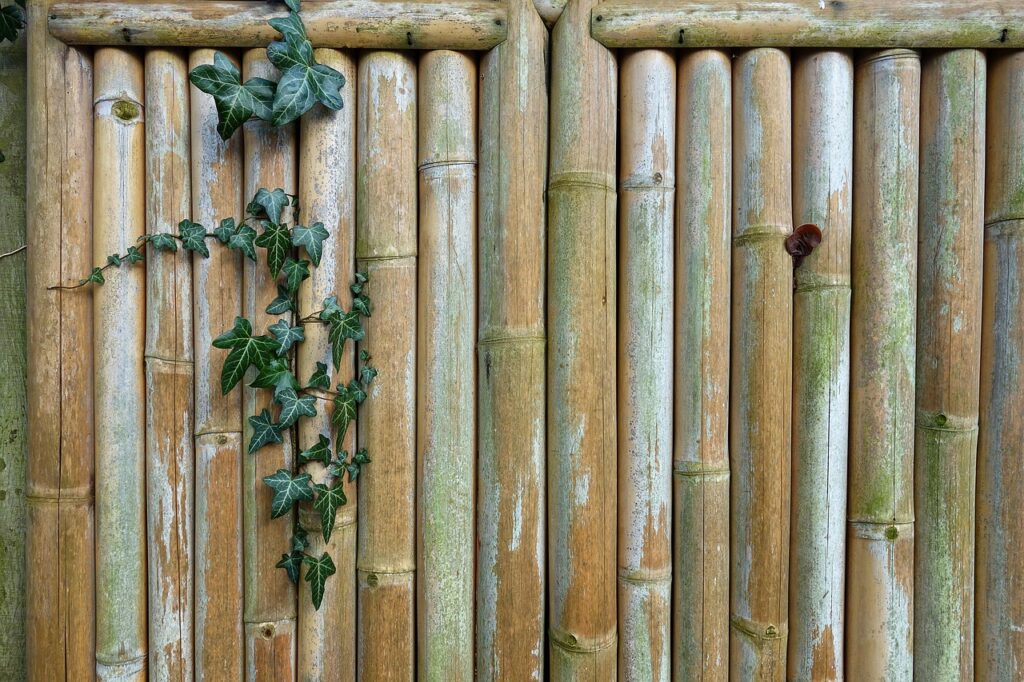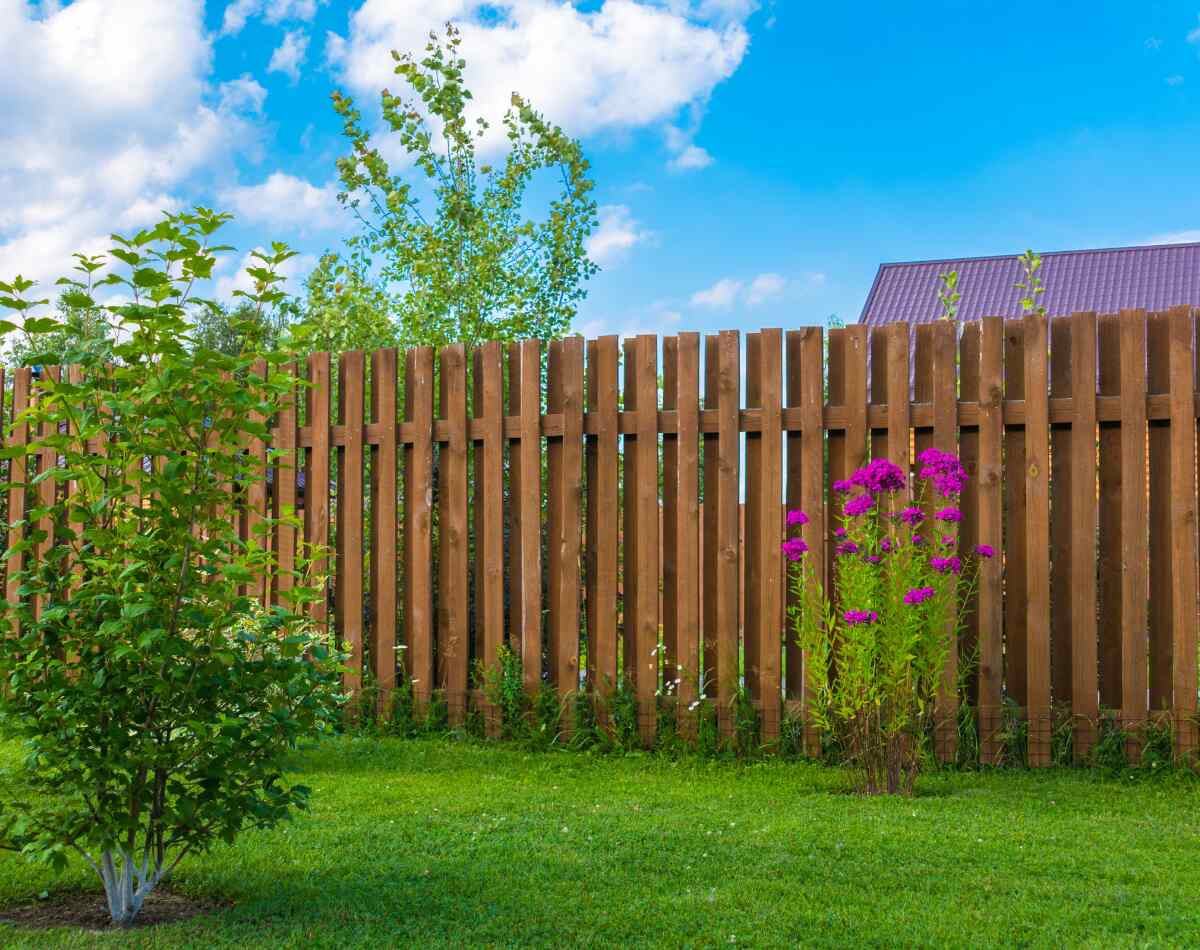In this article, you will learn about the eco-friendly aspects of certain fence materials. I have a blog website dedicated to fences, and I want to provide comprehensive information that resonates with my audience. I will delve into the intricacies of different fence types, sizes, shapes, materials, and how to determine the right one for specific needs.
Through my blog posts, I aim to educate readers about the characteristics and advantages of various fence types. I will explore the benefits, durability, maintenance requirements, and aesthetic appeal of wooden fences, chain-link fences, vinyl fences, metal fences, and more. Additionally, I will provide insights on which fence types are best suited for enhancing privacy, ensuring security, enclosing a backyard, or adding decorative elements to a property.
Along with discussing fence materials, I will also address the importance of choosing the appropriate size and shape based on specific requirements. This will involve considering factors such as property size, desired level of enclosure, and architectural considerations. By covering a wide range of topics, my goal is to provide readers with valuable knowledge and practical advice to make informed decisions when selecting and installing fences.
Here are ten common questions about fences:
- What are the benefits of installing a fence?
- What are the different types of fence materials?
- How do I determine the right size and shape of a fence for my property?
- Is a wooden fence more durable than a vinyl fence?
- What are the maintenance requirements for different types of fences?
- Which fence materials are most eco-friendly?
- Can I install a fence by myself or do I need professional help?
- What are the security features to consider when choosing a fence?
- How can I enhance the privacy of my backyard with a fence?
- Are there any regulations or permits required for installing a fence?
28. Highlighting the Eco-Friendly Aspects of Certain Fence Materials
Introduction
When it comes to choosing the perfect fence for your property, there are numerous factors to consider. From the type of material used to the size and shape of the fence, each element contributes to the overall aesthetics, durability, and functionality of the structure. However, in today’s environmentally conscious world, it has become increasingly important to consider the eco-friendly aspects of fence materials as well. In this article, we will explore the various fence materials and highlight the ones that are more environmentally friendly, providing you with valuable insights to make an informed decision.
1. Types of Fences
Before we delve into the eco-friendliness of different fence materials, let’s first take a look at the various types of fences available in the market:
1.1 Wooden Fences
Wooden fences are classic and timeless. They provide a natural and warm aesthetic to any property. Additionally, wood is a renewable resource, making it an eco-friendly option. However, the sustainability of wooden fences depends on the type of wood used and the sourcing practices employed by the manufacturer.
1.2 Chain-Link Fences
Chain-link fences are known for their versatility and affordability. They are made of metal, usually galvanized steel, which can be recycled. While the production of steel involves energy consumption and emission of greenhouse gases, the ability to recycle chain-link fences makes them a more sustainable choice.
1.3 Vinyl Fences
Vinyl, also known as PVC, fences have gained popularity due to their low maintenance and durability. However, their eco-friendliness is a subject of debate. Vinyl is made from petroleum, a non-renewable resource, and its production involves the release of toxic chemicals. Additionally, vinyl fences are not easily recyclable and can end up in landfills at the end of their lifespan.
1.4 Metal Fences
Metal fences, such as aluminum and steel, offer strength and durability. Aluminum is lightweight and resistant to corrosion, while steel provides robust security. Both materials can be recycled, making them environmentally friendly options. However, it is important to consider the energy-intensive manufacturing processes involved in producing metal fences.

2. Advantages and Considerations
In this section, we will explore the advantages and considerations of each fence material in terms of their eco-friendliness:
2.1 Wooden Fences
Wooden fences, when sourced sustainably, have the advantage of being made from a renewable resource. They can be recycled or repurposed at the end of their lifespan, reducing their environmental impact. However, wooden fences require regular maintenance, including staining or painting, which involves the use of chemicals that may be harmful to the environment.
2.2 Chain-Link Fences
Chain-link fences are eco-friendly due to their recyclable nature. At the end of their lifespan, they can be recycled into new steel products, reducing waste. Additionally, chain-link fences do not require as much maintenance as other alternatives, resulting in fewer chemicals being released into the environment.
2.3 Vinyl Fences
Although vinyl fences have low maintenance requirements, their eco-friendliness is a matter of concern. The production of vinyl releases toxic chemicals into the environment, and the non-biodegradable nature of vinyl contributes to landfill waste. However, some manufacturers are taking steps to improve the sustainability of vinyl through recycling programs.
2.4 Metal Fences
Metal fences, particularly aluminum and steel, are highly durable and can be recycled. Recycling metal reduces the need for raw material extraction and the energy consumption associated with the production process. However, the energy required to produce metal fences should be taken into consideration when assessing their overall eco-friendliness.
3. Durability and Maintenance Requirements
The durability and maintenance requirements of fence materials can also impact their eco-friendliness. Let’s explore how each material fares in these aspects:
3.1 Wooden Fences
Wooden fences can be durable if properly maintained. Regular sealing or staining helps protect the wood from weathering and decay, ensuring a longer lifespan. However, wooden fences are susceptible to rot, termite infestation, and warping, which may require frequent repairs or replacement.
3.2 Chain-Link Fences
Chain-link fences are highly durable, with a lifespan of up to 20 years or more. They require minimal maintenance, typically limited to occasional cleaning and repairing any damaged sections. This longevity and low maintenance requirement contribute to their eco-friendliness.
3.3 Vinyl Fences
Vinyl fences are known for their durability and resistance to weathering, rot, and insect damage. They have a long lifespan and require minimal maintenance. However, it is important to note that any repairs or replacements may lead to vinyl waste that is not easily recyclable.
3.4 Metal Fences
Metal fences, especially aluminum and steel, are renowned for their durability and strength. They can withstand harsh weather conditions and resist corrosion. With proper maintenance, such as periodic cleaning and addressing any signs of rust, metal fences can last for decades.

4. Aesthetic Appeal
The aesthetic appeal of a fence can greatly influence the overall look and feel of a property. Let’s explore the aesthetic aspects of each fence material:
4.1 Wooden Fences
Wooden fences have a timeless and natural beauty that can enhance the aesthetics of any property. They can be customized to various designs and finishes, allowing homeowners to achieve a desired look, whether it’s rustic, modern, or traditional.
4.2 Chain-Link Fences
Chain-link fences are known for their utilitarian appearance, often considered more functional than decorative. However, there are ways to enhance their visual appeal by incorporating colorful privacy slats or climbing plants.
4.3 Vinyl Fences
Vinyl fences come in a variety of colors, styles, and textures, offering homeowners multiple options to match their desired aesthetic. From the classic white picket fence to contemporary designs, vinyl fences can complement various architectural styles.
4.4 Metal Fences
Metal fences, particularly ornamental ones, are often chosen for their decorative appeal. They can be designed with intricate patterns and details, adding elegance and sophistication to any property. Additionally, metal fences can be powder-coated in different colors to suit individual preferences.
5. Choosing the Right Fence Size and Shape
The size and shape of a fence play a crucial role in fulfilling specific needs and requirements. Here are some factors to consider when determining the appropriate size and shape:
Selecting the right fence size primarily depends on the purpose it serves. For privacy, tall fences that block the view from neighboring properties or the street are ideal. Aesthetically, shorter fences that offer a decorative touch while still enclosing the property may be preferred. It is important to consider local regulations and neighborhood guidelines regarding fence height.
The shape of the fence can also influence its overall impact. Straight lines and angles provide a more formal and modern look, while curved lines create a softer and more organic feel. The shape should complement the architectural style of the property and blend harmoniously with the landscape.

6. Factors to Consider
When choosing a fence, there are several factors to consider beyond the eco-friendliness and aesthetics. Let’s explore some of these factors:
6.1 Property Size
The size of your property will influence the cost and feasibility of different fence materials. Large properties may require more materials and labor, increasing the overall expense. Additionally, smaller properties may benefit from fences that are visually lighter or transparent to maintain an open feel.
6.2 Desired Level of Enclosure
Consider the level of privacy or security you desire. If privacy is a priority, solid fences made of materials like wood or vinyl would be suitable. Alternatively, if security is the main concern, chain-link and metal fences can offer transparency while still providing a barrier.
6.3 Architectural Considerations
The architectural style of your property should be taken into account when selecting a fence. The fence should complement the existing structures and integrate seamlessly with the overall design. A knowledgeable fence contractor or designer can assist in choosing the right fence style and material for your specific architectural style.
7. Benefits of Wooden Fences
Wooden fences offer numerous benefits aside from their eco-friendliness. Here are some advantages of wooden fences:
- Natural beauty: Wooden fences provide a warm and inviting aesthetic that complements various architectural styles.
- Customization: Wood can be easily shaped and customized to achieve desired designs, whether it’s a classic picket fence or a modern slat fence.
- Versatility: Wood can be stained or painted in different colors to match personal preferences or property themes.
- Sound absorption: Wooden fences are effective at reducing noise transmission, providing a quieter and more peaceful environment.
- Privacy: With the right height and design, wooden fences can create a private space by blocking the view from outsiders.
- Property value: Well-maintained wooden fences can increase the overall value of a property, making them a good investment.

8. Benefits of Chain-Link Fences
Chain-link fences offer several advantages that make them a popular choice for various applications. Here are some benefits of chain-link fences:
- Affordability: Chain-link fences are cost-effective, making them a budget-friendly option for properties of all sizes.
- Durability: Made of galvanized steel, chain-link fences are resistant to rust and can withstand harsh weather conditions.
- Transparency: Chain-link fences provide visibility, allowing homeowners to monitor activities outside their property.
- Low maintenance: Chain-link fences require minimal maintenance, typically limited to occasional cleaning and repair of damaged sections.
- Security options: Accessories such as barbed wire and privacy slats can be added to enhance security and privacy when necessary.
- Quick installation: Chain-link fences can be installed efficiently, saving time and labor costs.
9. Benefits of Vinyl Fences
While the eco-friendliness of vinyl fences is debatable, they do offer certain benefits. Here are some advantages of vinyl fences:
- Low maintenance: Vinyl fences do not require staining, painting, or sealing like wooden fences. They can be easily cleaned with soap and water, saving time and effort.
- Durability: Vinyl fences are resistant to weathering, rot, and insect damage. They can withstand harsh climates without warping or cracking.
- Color options: Vinyl fences are available in a wide range of colors, allowing homeowners to match their desired aesthetic or property theme.
- Long lifespan: Well-maintained vinyl fences can last for many years, providing a long-term fencing solution.
- Pest resistance: Unlike wooden fences, vinyl fences are not susceptible to termite infestation or other pest damage.
- Warranty: Many vinyl fence manufacturers offer warranties, providing peace of mind and protection against defects or damage.

10. Benefits of Metal Fences
Metal fences, particularly aluminum and steel, offer unique advantages that make them appealing for various purposes. Here are some benefits of metal fences:
- Strength and durability: Metal fences are known for their strength and resilience. They can withstand external forces and provide long-lasting security.
- Customization options: Metal fences can be designed with intricate patterns and details, allowing for personalized and unique creations.
- Low maintenance: Metal fences require minimal maintenance, with occasional cleaning and rust prevention being the primary tasks.
- Security features: Metal fences can be further fortified with accessories like security spikes or locks to enhance protection.
- Warranty: Many metal fence manufacturers offer warranties against defects or structural issues, providing additional assurance.
- Recyclability: Both aluminum and steel fences are recyclable, minimizing waste and reducing the need for raw material extraction.
11. Fence Types for Enhancing Privacy
Privacy is a common concern for homeowners. Here are some fence types suitable for enhancing privacy:
- Wooden fences: Solid wood fences with minimal gaps between boards provide excellent privacy.
- Vinyl fences: Vinyl fences with solid panels or overlapping slats can offer privacy while requiring less maintenance than wood.
- Privacy screens: Privacy screens made of various materials, such as wood, metal, or bamboo, can be added to existing fences for enhanced privacy.
- Hedge fences: Living fences created by planting hedges or shrubs can provide natural privacy and add greenery to the landscape.
12. Fence Types for Ensuring Security
Security is paramount for many homeowners. Here are some fence types suitable for ensuring security:
- Chain-link fences with barbed wire: This combination provides a visible deterrent and enhances security.
- Metal fences with ornamental spear tops: These fences act as a physical barrier while adding a decorative touch to the property.
- Steel fences with privacy panels: Steel fences with added panels or slats can offer both privacy and security.
- Electric fences: Electric fences can be used for added security, particularly in rural areas where the presence of livestock may also be a concern.
Conclusion
Choosing the right fence material that aligns with your eco-friendly values can be a rewarding experience. By considering factors such as the type of material, durability, maintenance requirements, and aesthetic appeal, you can make an informed decision. Whether you opt for the classic charm of wooden fences, the affordability of chain-link fences, the low maintenance of vinyl fences, or the strength of metal fences, there are eco-friendly options available for every preference and requirement.
Remember to consider the environmental impact of each material and explore opportunities for recycling or repurposing your fence at the end of its lifespan. By prioritizing eco-friendliness and sustainability, you can ensure that your fence not only enhances the aesthetics and functionality of your property but also contributes positively to the environment.
Common Questions about Fences
- How much does a wooden fence cost?
- Can a chain-link fence provide adequate security?
- Are vinyl fences better than wooden fences in terms of durability?
- What is the average lifespan of a metal fence?
- Which fence material requires the least amount of maintenance?
- Can I paint a vinyl fence?
- What are the privacy options for chain-link fences?
- Are metal fences suitable for coastal areas with high salt exposure?
- How can I prevent rust on a metal fence?
- Are there any regulations regarding fence height and placement?
